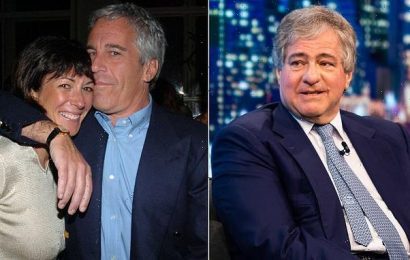TOM Cruise wannabe Kim Jong-un has been accused of faking the launch of North Korea's "biggest ever" nuclear missile after an earlier test rocket reportedly exploded.
North Korea last week released a Top Gun-inspired propaganda clip, claiming it had successfully test-fired a Hwasong-17 rocket – dubbed a "monster missile" by analysts who fear it is capable of carrying nuclear warheads.
The overblown clip showed Kim strut his stuff in a leather jacket and sunglasses in front of the colossal weapon, which was first unveiled in October 2020 and is able to hit global targets, as he oversaw the launch.
But South Korea's military claims the test actually featured an older, smaller intercontinental ballistic missile rather than the Hwasong-17 in a bid to try and head off negative reaction to a previous failed launch last month.
Officials from South Korea and the US believe a Hwasong-15 was instead used, which was first test-fired by North Korea in November 2017 ahead of a ban on intercontinental ballistic missile (ICBM) testing that ended last week.
Washington has not yet publicly weighed in, with Pentagon spokesman John Kirby telling reporters on Tuesday that the test was still being analysed.
Read more on North Korea
North Korea fires NINTH missile of the year as tensions rage amid Ukraine crisis
Mansions & yachts of North Korea’s mysterious elite revealed in satellite pics
Following the alleged launch of the Hwasong-17, Seoul and Washington analysts spotted discrepancies in slick video and photos released by North Korean state media.
They believe shadows, weather, and other factors suggested it was from an earlier test, possibly a failed launch on March 16.
"The choice of the Hwasong-15, which is more reliable with the successful test in 2017, could be intended to block rumours and ensure regime stability by delivering a message of success within the shortest time possible, after residents of Pyongyang witnessed the failure of the March 16 liftoff," the defence ministry said in a report provided to parliament and obtained by Reuters.
The test could additionally have been aimed at boosting its status as a military powerhouse and improving bargaining power against South Korea, the US and the international community, the report concluded.
Most read in The Sun
GREAL PAIN 
England star Grealish reveals why he fumed at ref for sending off Serge Aurier

British Airways warning – airline cancels flights due to travel chaos

Harry slammed for 'cruel snub' to Queen after missing Prince Philip service

Bale considering short deal with new club before RETIRING after World Cup
US and South Korean officials had said that tests on February 27 and March 5 involved the Hwasong-17 system, likely in preparation for a full-range launch.
North Korea never acknowledged the March 16 launch or its reported failure.
Debris from that failed test rained down over Pyongyang, Ha Tae-keung, a South Korean lawmaker briefed by the military told reporters on Tuesday.
That failure prompted North Korea to tell a "big lie" and say the March 24 Hwasong-15 launch was a Hwasong-17 to avoid negative domestic public opinion, Ha said.
Thursday's missile flew for 67.5 minutes to a range of 1,090km and a maximum altitude of 6,248.5km, state media reported.
Those numbers are similar to data reported by Japan and South Korea and are further and longer than the first Hwasong-15 test, which flew for 53 minutes to an altitude of about 4,475km and range of 950km.
Thursday's missile's characteristics, such as ascending acceleration, combustion, and stage separation times were similar to those of Hwasong-15 even thought the flight flew farther and reached higher altitudes, the report said.
South Korean officials had suggested North Korea may have modified a Hwasong-15 or launched it without a significant test payload to increase its range.
Analysts say the March 16 explosion may have been caused by a problem in the engines.
The ministry report noted that the Hwasong-17 requires a more sophisticated cluster of four Paektusan-class engines compared with the Hwasong-15's two, and that eight days between launches was not enough to analyse the cause of the failure.
Read More on The Sun
Ashley Cain & girlfriend Safiyya SPLIT a year after daughter Azaylia’s death
Shane Warne’s daughter cries at tribute to cricket king as a BILLION tune in
"If March 16 was a Hwasong-17 failure and March 24 was a Hwasong-15, it obviously shows the Hwasong-17 still has teething problems," said Vann Van Diepen, a former US government official involved in weapons of mass destruction and nonproliferation.
A second successful test of the Hwasong-15 would have confirmed its reliability, but if its improved performance was only because of reduced payload, then the significance would be limited, he said.
Source: Read Full Article














